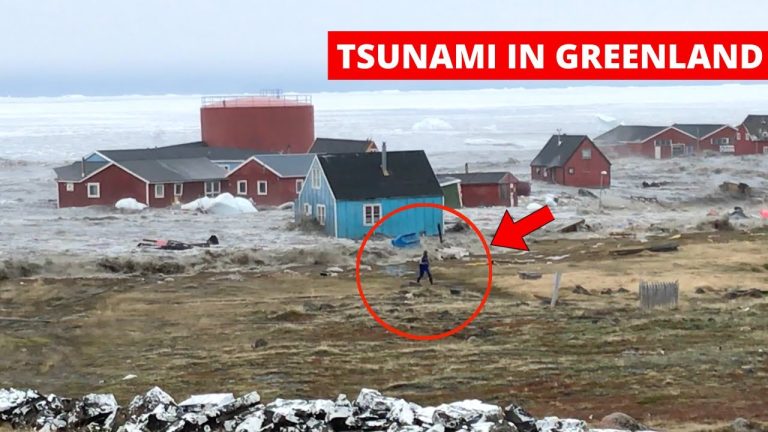Massive Tsunami Hits Greenland Causing Landslide

In a dramatic and unprecedented event, a massive tsunami struck Greenland, causing a landslide that not only reshaped the landscape but also sent shockwaves around the world. This natural disaster, which scientists have linked directly to the climate crisis. Has left a lasting impact on both the environment and the scientific community.
The Event
In September 2024, a colossal rockslide in Greenland triggered a mega-tsunami with waves reaching up to 650 feet high12. The initial cause was the melting of glacial ice, which destabilized a steep mountainside. This led to a rock and ice avalanche crashing into the deep waters of Dickson Fjord. Also displacing a massive volume of water and creating towering waves23.
The Aftermath
The tsunami waves, some as tall as the Statue of Liberty, bounced back and forth across the fjord for nine days, a phenomenon known as a seiche23. This continuous movement of water also generated a unique seismic signal that was detected globally. Also even reaching as far as Antarctica3. The event caused significant damage to the remote Ella Island. A key landmark used for scientific research and by the Danish military2.

Scientific Insights
Researchers have been studying the seismic signals and the environmental impact of this event. The findings, published in the journal Science, reveal that the vibrations caused by the tsunami lasted for nine days, making it one of the longest-lasting seismic events ever recorded3. This has provided valuable insights into the dynamics of such natural disasters and also the potential future risks posed by climate change23.
Climate Change Connection
As global temperatures rise, the stability of glaciers and ice sheets is increasingly compromised, leading to more frequent and severe natural disasters23. This event serves as a stark reminder of the urgent need to address climate change. And also implement early warning systems in vulnerable regions3.
The massive tsunami in Greenland is a sobering example of the power of nature. And the far-reaching impacts of climate change.


